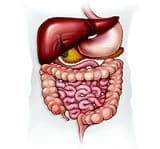From Helen Chin Lui’s book, “Digestive Health Secrets: Deactivate Your Sick Genes NOW!” coming out in 2015.
My clients have been talking to me about the “Dirty Dozen Foods” list. What is it? I decided to take some time to learn more about the list. From my research I learned that the Environmental Working Group (EWG) develops an annual list of the “Dirty Dozen Foods” and “Clean 15” foods that are safer to eat non-organically. The group analyzes the Department of Agriculture’s data about pesticide residue and ranks foods based on how much or how little pesticide residue they have. The range is between 47 to 67 pesticides per serving. Information is compiled from over 96,000 studies conducted by FDA and the USDA. I was astonished and scared when I found out what pesticides are being used to keep insects from eating entire crops. It makes me think twice when I’m buying non-organic foods.
2014 “Dirty Dozen Foods” are –
1. Apples – Because insects love the sweetness of apples there can be as many as 47 different pesticides sprayed on them. If organic apples aren’t in your budget, try peeling the apples before eating, however the majority of nutrients, vitamins, and minerals are found in apple peels. Look for organic applesauce and apple juice. About 97% of apples test positive for pesticides.
2. Strawberries – Another fruit that insects love. Recently US government has pulled the deadly cancer-causing pesticide methyl iodide from strawberry production. Methyl iodide is a fumigant pesticide that is used to sterilize soil before planting crops like strawberries, potatoes and carrots. Normal fumigant application is anywhere from 50 to 400 pounds per acre compared to 1 to 5 pounds for other pesticides.
3. Grapes – Grapes have more than 30 pesticides including iprodione and mycloutanil. These pesticides can cause endocrine disruption as well as reproductive abnormalities. Look for organic raisins and wine.
4. Celery – There have been up to 60 different pesticides including chlorantraniliprole and spinosad. Chlorantraniliprole is a man made pesticide that is used to kill insect eggs and larvae. Spinosad is rather a new pesticide that recently came on the market. It is a natural and organic pesticide. It is a broad-spectrum insecticide that is toxic to wide range of insects but it is relatively non-toxic to people and beneficial insects.
5. Peaches – Another fruit that insects love. There can be up to 60 different chemicals found on peaches. 97% of peaches tested positive for pesticides. Since peaches have very soft skins pesticides are highly absorbable.
6. Spinach – There are 48 different pesticides found on spinach. Spinach tops the green vegetable list of contaminates due to infestation of Miner Beetles that likes to lay their eggs on the underside.
7. Sweet Bell peppers – No matter what color the peppers are, they are covered with pesticides. Peppers are susceptible to pepper maggot which explains the high pesticide residue.
8. Nectarines (domestic and imported) – Due to soft skins, like the peach, pesticides are highly absorbable. Pesticides including formetanate hydrochloride having neurotoxins. 31% of nectarines carrying potent carcinogens such as iprodione as well as endocrine disruptors. (source: http://www.pesticides.gov.uk/Resources/CRD/Migrated-Resources/Documents/N/Nectarines-march.pdf)
9. Cucumbers – 87 pesticides residues found by the USDA pesticide data program including carcinogens, hormone disruptors, neurotoxins, reproductive disruptors (source: http://whatsonmyfood.org/food.jsp?food=CU)
10. Tomatoes – 35 pesticide residues found. Just skimming the high pesticide residue list.
11. Imported Snap Peas – 79 pesticides resides found.
12. Potatoes – High in pesticides including chlorpropham and o-phenylphenol. These pesticides can disrupt the endocrine balance.
For more detail on how much and what pesticides are applied to fruits and vegetables and how it effects human health and the environment visit http://whatsonmyfood.org/food.jsp?food=CU
For annual pesticide information visit www.ewg.org or if you would like more information of the latest list of 48 fruits and vegetables that have the most pesticide residue visit www.ewg.org/foodnews/list.php
———————–
The Healing Place has helped hundreds of adults and children to find long-lasting relief from chronic pain, digestive issues and heal hormonal imbalances naturally.
Helen Chin Lui is a certified Reflexologist, Certified Energy Medicine and Reiki Practitioner. She is the founder and owner of the Healing Place in Medfield, MA. She specializes in helping people with chronic digestive disorders. For her free report “Proven Alternative Ways to Heal Common Chronic Digestive Problems: What Your Doctor Doesn’t Know Can Keep You From Healing” click here.








 The Healing Place LLC helps all ages to find relief from chronic pain, chronic digestive problems and balance hormones naturally. We practice COVID19 safety. Don’t forget to check on our online school HealingPlaceEnergySchool.com. Thank you.
The Healing Place LLC helps all ages to find relief from chronic pain, chronic digestive problems and balance hormones naturally. We practice COVID19 safety. Don’t forget to check on our online school HealingPlaceEnergySchool.com. Thank you.
Recent Comments